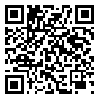Volume 15, Issue 3 (Volume 15, No3 2024)
jdc 2024, 15(3): 163-169 |
Back to browse issues page
Download citation:
BibTeX | RIS | EndNote | Medlars | ProCite | Reference Manager | RefWorks
Send citation to:



BibTeX | RIS | EndNote | Medlars | ProCite | Reference Manager | RefWorks
Send citation to:
Ehsani A, Rezaei majd S, Ehsani A, Nourmohammadpour P, Koohian Mohammadabadi M, Razavi Z, et al . A comprehensive overview of pityriasis lichenoides: clinical features and treatment responses. jdc 2024; 15 (3) :163-169
URL: http://jdc.tums.ac.ir/article-1-5744-en.html
URL: http://jdc.tums.ac.ir/article-1-5744-en.html
Ala Ehsani1 
 , Seyedamirmohamad Rezaei majd2
, Seyedamirmohamad Rezaei majd2 
 , Amirhoushang Ehsani3
, Amirhoushang Ehsani3 
 , Pedram Nourmohammadpour2
, Pedram Nourmohammadpour2 
 , Mina Koohian Mohammadabadi4
, Mina Koohian Mohammadabadi4 
 , Zahra Razavi2
, Zahra Razavi2 
 , Mahshid-ol-Sadat Ansari2
, Mahshid-ol-Sadat Ansari2 
 , Reyhaneh Seyf5
, Reyhaneh Seyf5 
 , Amirhossein Rahimnia *
, Amirhossein Rahimnia * 
 6
6

 , Seyedamirmohamad Rezaei majd2
, Seyedamirmohamad Rezaei majd2 
 , Amirhoushang Ehsani3
, Amirhoushang Ehsani3 
 , Pedram Nourmohammadpour2
, Pedram Nourmohammadpour2 
 , Mina Koohian Mohammadabadi4
, Mina Koohian Mohammadabadi4 
 , Zahra Razavi2
, Zahra Razavi2 
 , Mahshid-ol-Sadat Ansari2
, Mahshid-ol-Sadat Ansari2 
 , Reyhaneh Seyf5
, Reyhaneh Seyf5 
 , Amirhossein Rahimnia *
, Amirhossein Rahimnia * 
 6
6
1- Skin Research Center, Shahid Beheshti University of Medical Sciences, Tehran, Iran
2- Department of Dermatology, Tehran University of Medical Sciences, Tehran, Iran
3- Autoimmune Bullous Diseases Research Center, Razi Hospital, Tehran University of Medical Sciences, Tehran, Iran
4- Department of Medicine, Iran University of Medical Sciences, Tehran, Iran
5- Department of Medicine, Tehran University of Medical Sciences, Tehran, Iran
6- Rahimnia ,rahimnia.amir@gmail.com
2- Department of Dermatology, Tehran University of Medical Sciences, Tehran, Iran
3- Autoimmune Bullous Diseases Research Center, Razi Hospital, Tehran University of Medical Sciences, Tehran, Iran
4- Department of Medicine, Iran University of Medical Sciences, Tehran, Iran
5- Department of Medicine, Tehran University of Medical Sciences, Tehran, Iran
6- Rahimnia ,
Abstract: (157 Views)
Background and aim: Pityriasis lichenoides (PL) is a rare papulosquamous disorder with an unknown etiology. Due to limited recent studies on this subject, the present research was conducted to describe the clinical manifestations and treatment course of these patients.
Methods: This retrospective cross-sectional study (2019-2023) was conducted on patients diagnosed with PL at Razi Dermatology Hospital, Tehran University of Medical Sciences, Iran confirmed by biopsy of skin lesions. Basic information was obtained from hospital records, and treatment follow-up was gathered from medical files and phone interviews with patients. Data were analyzed using R software, with a P<0.05 considered statistically significant.
Results: A total of 147 patients were evaluated. No significant difference was found between genders (P=0.358). The predominant subtype was PLC (91.8%), with a mean age of onset of 29.79 ± 18.73 years. The most common type of skin lesion was papules (48.4%), and generalized body involvement was the most frequent manifestation, observed in 58 patients (32.4%). The most commonly used treatment was topical corticosteroids, administered to 86 patients (52.4%). The average duration from onset to full recovery was 160.80±221.40 days. A total of 45 patients (30.6%) reported recurrent episodes of the disease. No significant association was found between treatment efficacy and gender (P=0.620), underlying conditions (P=0.293), or age (P=0.876).
Conclusion: Given the limited clinical data on patients with pityriasis lichenoides, establishing an electronic database and a national registry system for this condition is recommended.
Methods: This retrospective cross-sectional study (2019-2023) was conducted on patients diagnosed with PL at Razi Dermatology Hospital, Tehran University of Medical Sciences, Iran confirmed by biopsy of skin lesions. Basic information was obtained from hospital records, and treatment follow-up was gathered from medical files and phone interviews with patients. Data were analyzed using R software, with a P<0.05 considered statistically significant.
Results: A total of 147 patients were evaluated. No significant difference was found between genders (P=0.358). The predominant subtype was PLC (91.8%), with a mean age of onset of 29.79 ± 18.73 years. The most common type of skin lesion was papules (48.4%), and generalized body involvement was the most frequent manifestation, observed in 58 patients (32.4%). The most commonly used treatment was topical corticosteroids, administered to 86 patients (52.4%). The average duration from onset to full recovery was 160.80±221.40 days. A total of 45 patients (30.6%) reported recurrent episodes of the disease. No significant association was found between treatment efficacy and gender (P=0.620), underlying conditions (P=0.293), or age (P=0.876).
Conclusion: Given the limited clinical data on patients with pityriasis lichenoides, establishing an electronic database and a national registry system for this condition is recommended.
Keywords: oityriasis lichenoides, papulosquamous skin diseases, vesiculobullous skin disease, corticosteroids, treatment outcome
Type of Study: Research |
Subject:
General
Received: 2024/12/29 | Accepted: 2024/11/5 | Published: 2024/11/5
Received: 2024/12/29 | Accepted: 2024/11/5 | Published: 2024/11/5
Send email to the article author
| Rights and permissions | |
 |
This work is licensed under a Creative Commons Attribution-NonCommercial 4.0 International License. |



